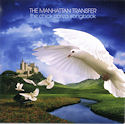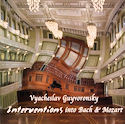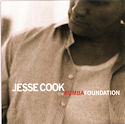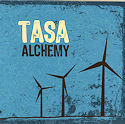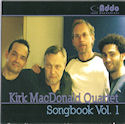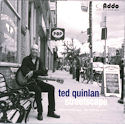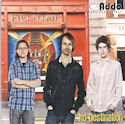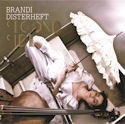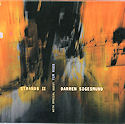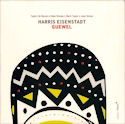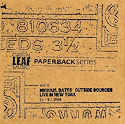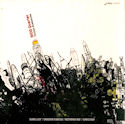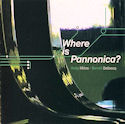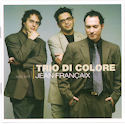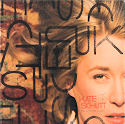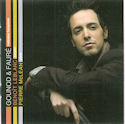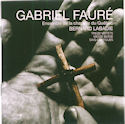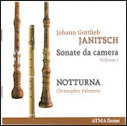In the October column I incorrectly identified the Smithsonian Chamber Players’ performance of Verklärte Nacht as an earlier recording, previously issued elsewhere. This is a new performance. I remembered the earlier recording fondly and attributed the difference in the sound to new transfers a dozen years later. This and the overt absence of any recording dates in the new set led me to the incorrect assumption. My thanks to Daniel Shores, managing director of Sono Luminus/Dorian Recordings, for pointing this out. A revised version of last month’s column can be found at www.thewholenote.com.
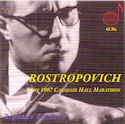 Over two and a half weeks during February–March 1967 Rostropovich, who was then at the height of his powers, presented in eight evenings 30 cello concertos accompanied by The London Symphony Orchestra conducted by Gennadi Rozhdestvensky. Carnegie Hall audiences witnessed a sensational marathon of a depth and magnitude that had not been undertaken before, or since. Consider the logistics of the planning and execution of such a project involving 30 concertos, each to be played once only. About half the concertos were not standard repertoire and consisted of less familiar newer works and a few premiers of compositions written for and dedicated to him. Doremi has managed to access 22 of these performances in fine, naturally balanced sound and has accommodated them on six CDs, priced as five, of about 80 minutes each (DHR-7974-9). Rostropovich made studio recordings of several of these concertos but the vitality, inspiration and an unmistakable sense of occasion of these performances are unmatched. For example, Bloch’s Schelomo has searing outbursts with emotions bursting at the seams. The Elgar concerto and the Rococo Variations are, at the very least, equal to the best performances ever. An electrifying performance of Brahms Double Concerto with the 21 year young Itzhak Perlman has to be heard to be believed. This set includes works that Rostropovich never recorded commercially and can be heard only here. Of the new works I was particularly enchanted by the clever, innovative Partita by Boris Tchaikovsky (1925-1996) and the Suite by Yuri Levitin (Russia 1912-1993) which is unassumingly delightful. The sparkling and attractive Adagio and Variations by Respighi is immaculately scored and should be better known. This package documents a unique triumph and is happily recommended.
Over two and a half weeks during February–March 1967 Rostropovich, who was then at the height of his powers, presented in eight evenings 30 cello concertos accompanied by The London Symphony Orchestra conducted by Gennadi Rozhdestvensky. Carnegie Hall audiences witnessed a sensational marathon of a depth and magnitude that had not been undertaken before, or since. Consider the logistics of the planning and execution of such a project involving 30 concertos, each to be played once only. About half the concertos were not standard repertoire and consisted of less familiar newer works and a few premiers of compositions written for and dedicated to him. Doremi has managed to access 22 of these performances in fine, naturally balanced sound and has accommodated them on six CDs, priced as five, of about 80 minutes each (DHR-7974-9). Rostropovich made studio recordings of several of these concertos but the vitality, inspiration and an unmistakable sense of occasion of these performances are unmatched. For example, Bloch’s Schelomo has searing outbursts with emotions bursting at the seams. The Elgar concerto and the Rococo Variations are, at the very least, equal to the best performances ever. An electrifying performance of Brahms Double Concerto with the 21 year young Itzhak Perlman has to be heard to be believed. This set includes works that Rostropovich never recorded commercially and can be heard only here. Of the new works I was particularly enchanted by the clever, innovative Partita by Boris Tchaikovsky (1925-1996) and the Suite by Yuri Levitin (Russia 1912-1993) which is unassumingly delightful. The sparkling and attractive Adagio and Variations by Respighi is immaculately scored and should be better known. This package documents a unique triumph and is happily recommended.
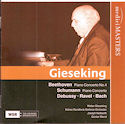 Walter Gieseking made lots of recordings before, during and after WW2 for Electrola and HMV including versions of the two major works included on a new Medici Masters CD, the Beethoven fourth and Schumann piano concerto (MM 017, mono). Gieseking, born in Lyon in 1896, was a star in the firmament of his generation, particularly lauded for his interpretations of French and German repertoire. His playing on this disc is characteristically crisp and articulate, energetic and secure with not one indecisive moment. Joseph Keilberth conducts the Cologne Radio Symphony in the Beethoven, from September 14, 1953 and everyone involved is on the same page in this decisive statement. Gieseking’s own cadenza in the first movement sounds as if it were Beethoven’s own. The tempi for the Schumann under Gunter Wand in Cologne on January 8, 1951 are refreshingly high-spirited and dynamic, creating in a showpiece for soloist, conductor and orchestra. To bring the listener back to earth, the disc finishes with some Debussy, Ravel, and Bach, live from Stockholm on October 23, 1948. Gieseking admitted, no, stated, that he did not practice! Not a hint of this is evident here with but a couple of wrong notes in 75 live minutes.
Walter Gieseking made lots of recordings before, during and after WW2 for Electrola and HMV including versions of the two major works included on a new Medici Masters CD, the Beethoven fourth and Schumann piano concerto (MM 017, mono). Gieseking, born in Lyon in 1896, was a star in the firmament of his generation, particularly lauded for his interpretations of French and German repertoire. His playing on this disc is characteristically crisp and articulate, energetic and secure with not one indecisive moment. Joseph Keilberth conducts the Cologne Radio Symphony in the Beethoven, from September 14, 1953 and everyone involved is on the same page in this decisive statement. Gieseking’s own cadenza in the first movement sounds as if it were Beethoven’s own. The tempi for the Schumann under Gunter Wand in Cologne on January 8, 1951 are refreshingly high-spirited and dynamic, creating in a showpiece for soloist, conductor and orchestra. To bring the listener back to earth, the disc finishes with some Debussy, Ravel, and Bach, live from Stockholm on October 23, 1948. Gieseking admitted, no, stated, that he did not practice! Not a hint of this is evident here with but a couple of wrong notes in 75 live minutes.
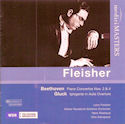 American pianist, Leon Fleisher, born inSan Francisco in 1928, was a regular on the concert stage from the mid 1940s until 1965 when the problem with his right hand caused his temporary retirement. He successfully continued his career playing works for the left hand until 1995, when some new therapy, including Botox!, restored his right hand. Since then he has made recordings and resumed his public performances.
American pianist, Leon Fleisher, born inSan Francisco in 1928, was a regular on the concert stage from the mid 1940s until 1965 when the problem with his right hand caused his temporary retirement. He successfully continued his career playing works for the left hand until 1995, when some new therapy, including Botox!, restored his right hand. Since then he has made recordings and resumed his public performances.
From the archives of the WDR, Medici Arts has issued a CD of the second and fourth Beethoven concertos from studio performances in 1956 (the 4th) and 1957 (the 2nd) with the Cologne Radio Symphony (MM036, mono). These predate the Cleveland/Szell Columbia recordings by a couple of years. I must say that it was a great pleasure to sit back and enjoy these gorgeous, fresh performances, the second concerto conducted by Hans Rosbaud and the fourth by Otto Klemperer. Klemperer also conducts the Overture to Iphigenie in Aulis. Excellent sound, as is the Gieseking above.
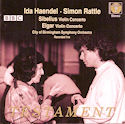 For decades, Ida Haendel made the Sibelius violin concerto her particular favourite into which she has particular insights which are clearly heard in the masterful yet unpretentious interpretation that is unique to her. She is heard with Simon Rattle and The City of Birmingham Symphony playing the Sibelius in a live performance from The Royal Albert Hall on September 7, 1993 (Testament SBT 1444). Happily Rattle is a sensitive and empathetic accompanist and together they turn in an especially splendid performance. The Elgar concerto follows from a concert in The Royal Festival Hall on 22 February 1984. Elgar’s musical language is different from Sibelius’s but, again, soloist and conductor are in tune with the composer and we hear a sterling performance.
For decades, Ida Haendel made the Sibelius violin concerto her particular favourite into which she has particular insights which are clearly heard in the masterful yet unpretentious interpretation that is unique to her. She is heard with Simon Rattle and The City of Birmingham Symphony playing the Sibelius in a live performance from The Royal Albert Hall on September 7, 1993 (Testament SBT 1444). Happily Rattle is a sensitive and empathetic accompanist and together they turn in an especially splendid performance. The Elgar concerto follows from a concert in The Royal Festival Hall on 22 February 1984. Elgar’s musical language is different from Sibelius’s but, again, soloist and conductor are in tune with the composer and we hear a sterling performance.
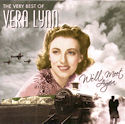 November 11th is Armistice Day, remembering the end of THE GREAT WAR aka THE WAR TO END ALL WARS aka WW1. During WW2 through radio and recordings songs of inspiration and hope were a universal morale builder. No vocalist, at least in Britain and the colonies and probably elsewhere, was as easily recognised as Vera Lynn. She was called “The Sweetheart of the Forces” and the songs she recorded were convincingly optimistic. Decca has issued a nostalgic CD entitled We’ll Meet Again – The Very Best of Vera Lynn with 20 of those important morale builders including The White Cliffs of Dover, We’ll Meet Again, Auf Wiederseh’n Sweetheart, As Time Goes By, When I Grow Too Old to Dream, and Wish Me Luck as You Wave Me Goodbye (2715983). A very pleasant collection I thought.
November 11th is Armistice Day, remembering the end of THE GREAT WAR aka THE WAR TO END ALL WARS aka WW1. During WW2 through radio and recordings songs of inspiration and hope were a universal morale builder. No vocalist, at least in Britain and the colonies and probably elsewhere, was as easily recognised as Vera Lynn. She was called “The Sweetheart of the Forces” and the songs she recorded were convincingly optimistic. Decca has issued a nostalgic CD entitled We’ll Meet Again – The Very Best of Vera Lynn with 20 of those important morale builders including The White Cliffs of Dover, We’ll Meet Again, Auf Wiederseh’n Sweetheart, As Time Goes By, When I Grow Too Old to Dream, and Wish Me Luck as You Wave Me Goodbye (2715983). A very pleasant collection I thought.
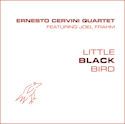 Little Black Bird
Little Black Bird

